
Alins

Pictures: 6.viii.2006, 29.vii.2020


Pictures: 6.viii.2006, 29.vii.2020
| The construction | The waterworks |
The channel first stays close to the river and then runs through meadows (10) where it receives more water from some wells and eventually, close to the bridge, runs out in a communal washing place (11). It then dives under the bridge (12) and soon runs parallel to the road but at some distance(13). The last stretch is made of concrete and lies next to the road (14, 15).
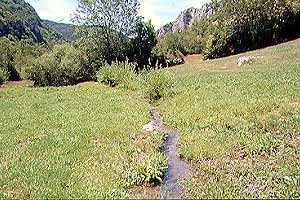
The last few meters to the wheel are bridged by an open wooden pipe (at places patched with zinc) (16, 17, 18). An open chute is a primitive feature that has disappeared almost everywhere else. Other open chutes can be seen in the mill of Lacabezonada, in Ainielle, and in the Indian gharats.
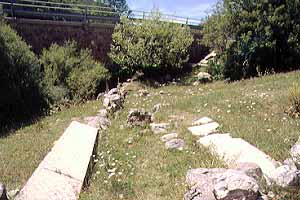
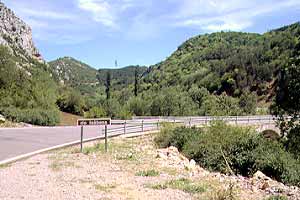
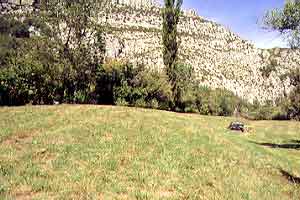
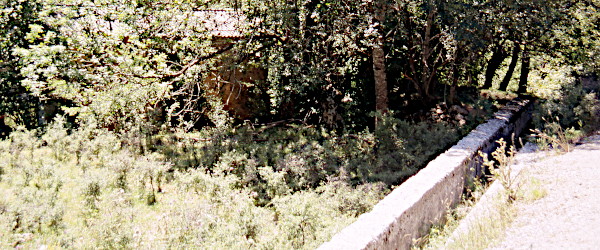
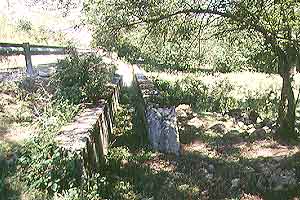
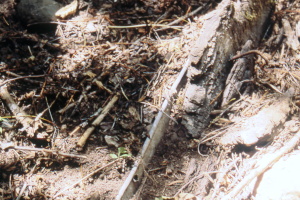
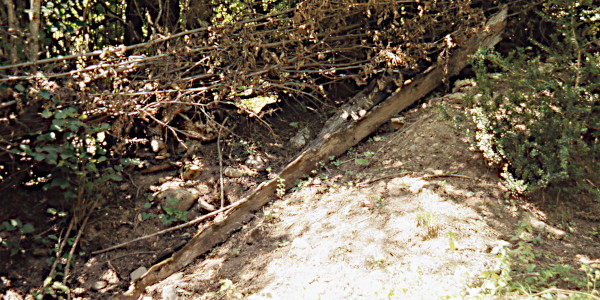
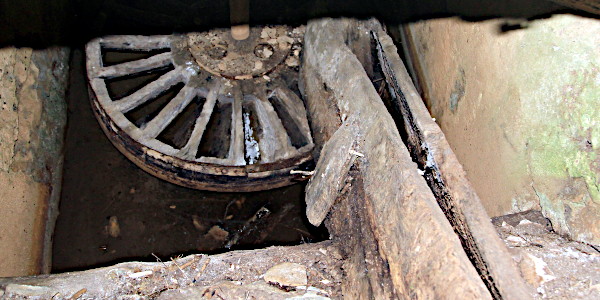
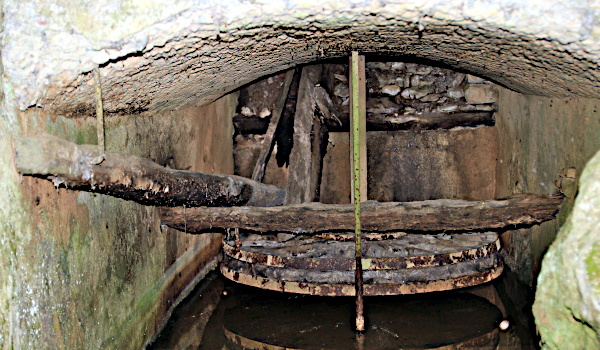
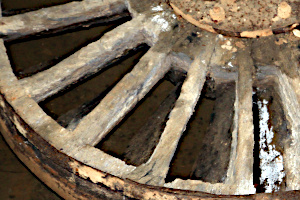
What makes this mill definitely worth a visit is the way in which the water flow over the wheel was regulated. Not with a pressure pipe and a nozzle with a shutter like everywhere else, but with a deflector, a paradera (19). When the deflector is in the down position as shown, the water jet from the chute is dispersed and the wheel stops. When the deflector is up, the action of the water will spin the wheel.
In our entire study area there are only three mills where a deflector system has been preserved in good condition: here, in Lacabezonada, and in Sarsa da Surta.
| The construction | The waterworks |